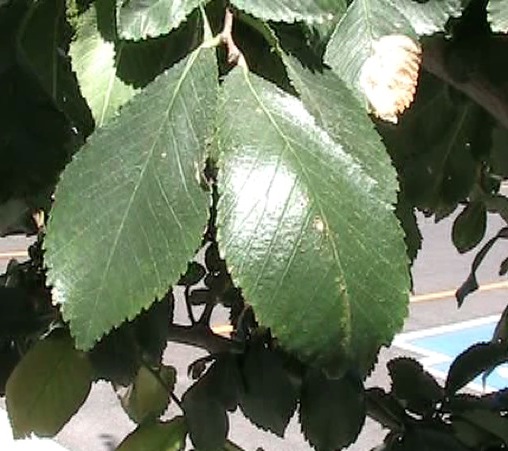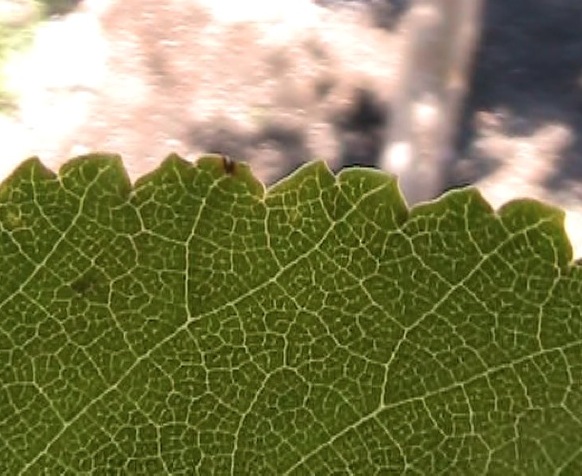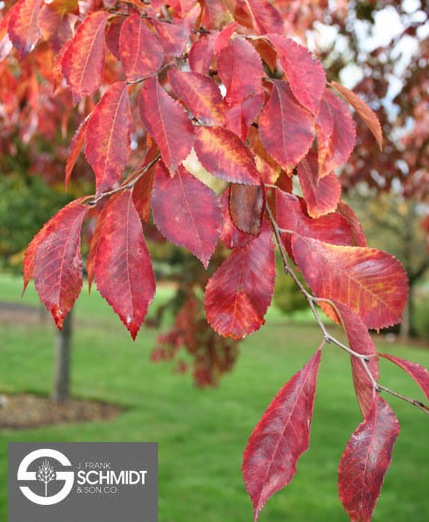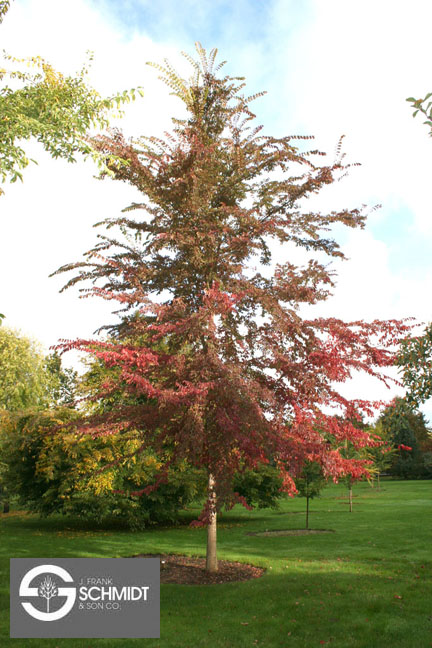| PSC 2620: Woody Trees and Shrub | Course Home | Week 7 |
Ulmus parvifolia - Chinese or Lacebark Elm
Plant Viewer
 |
 |
| The leaf is obovate and and a dark glossy green. It is has a pinnate venation pattern. | The margin is irregularly serrated. |
 |
 |
| The fall color of the Ulmus parvifolia is very variable. It can be a good red or yellow, to a disappointing brown. | The bark exfoliates in platess, creating a mottled mixture of colors on the bark. Image: Wikipedia.org |
Plant Description
Ulmus parvifolia, or Chinese or Lacebark Elm, is a vigorous and large shade tree, reaching 40-50 feet high and wide. It has a good round form that has a very slight weeping habit. Other Elm species, particularly the American Elm, have been beloved for centuries and used extensively in nearly every situation imaginable. Unfortunately, Elms are so ravaged by disease that you are really playing Russian roulette by planting one. Lacebark Elm is more resistant to many of the prominent Elm diseases, but if a tree ever becomes stressed there is a good likelihood that it will not recover.
The 3/4 to 2 1/2 inch long leaf is obovate and dark glossy green in color. The plentiful veins are pinnate in arrangement and stand out from the leaf. The margin is serrated and the leaves are arranged alternately on the stem. In the fall the leaves will turn a yellow, orange or red color with a great deal of variation in the hue.
The bark is very ornamental. It exfoliates in small plates similar to the Planetree. Color variations of browns, olive green and orange are visible on the tree. The samaras are rounded, 1/3 inch wide and notched at the bottom. They form in clusters and ripen in the fall.
Landscape Use
Use as a shade tree or lawn tree. Also suitable as a street tree.
Points of interest
It has good resistance to Dutch Elm Disease and Japanese beetle.
Notable Cultivars
Frontier A smaller cultivar with a good vase shape. It grows 30 feet high by 20 wide.
